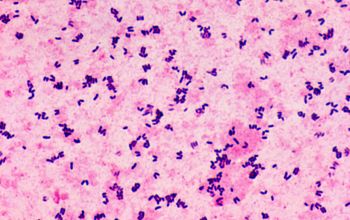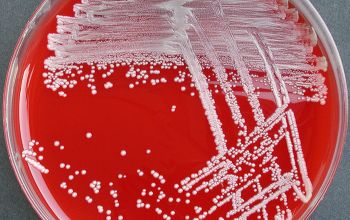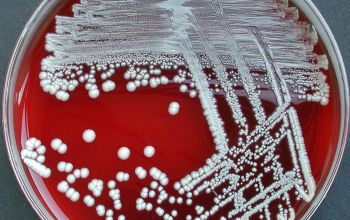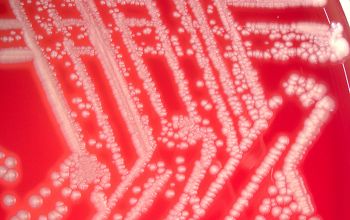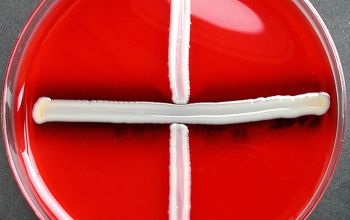Corynebacterium ulcerans
-
General information
The pathogenic potential of coryneform bacteria has been underestimated
C. ulcerans is , together with C. peudotuberculosis, the closest relative of C. diphteriae.
Taxonomy
Family: Corynebacteriaceae
Natural habitats
Part of the normal flora of humans and livestock.
Is a veterinary pathogen that causes mastitis in cattle.
Clinical significance
Disease associated with C. ulcerans is rare, but if they are recovered from pseudomembranous material, the disease must be treated like a case of diphtheria.
They can be transmitted from companion pets to humansa and cause significant infection.
-
Gram stain
Gram positive rods,
irregularly shaped (‘coryneforms”), they are arranged as single cells, in pairs, in V forms, in palisades, or in clusters with
a so-called Chinese-letter appearance.
Club-shaped rods are observed in true members of the genus Corynebacterium only
-
Culture characteristics
-
Facultative anaerobic
BA: colonies are some what dry, and gray-white, with some hemolysis, and are 1-2 mm in diameter after 24h.
McConkey: no growth
BBAØ: growth
-
-
Characteristics
-
References
James Versalovic et al.(2011) Manual of Clinical Microbiology 10th Edition
Karen C. Carrol et al (2019) Manual of Clinical Microbiology, 12th Edition
Clinical Microbiology of Coryneform Bacteria Guido Funke Clin Microbiol Reviews, jan 1997

